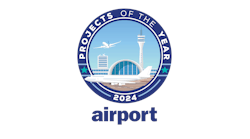COVID-19 has had a broader and more prolonged impact than any other event in the history of passenger air travel, bringing a reduced demand for global aviation that we have not previously seen. But as vaccines become more accessible along with more widely available therapeutics, all indications are that the demand for travel for both leisure and business reasons will return in a significant way.
Leisure travel is anticipated to increase once the pandemic begins to wane, while business travel may follow suit over a longer period as companies limit in-person meetings through continued utilization of virtual communication.
With this expected bounce back, airports with good balance sheets and traditionally stable passenger demand prior to COVID-19, and those with heavy leisure demand can take advantage and proceed with capital projects now, in order to leverage low pricing and availability of labor.
Airports that wait for passenger demand to return to pre-COVID levels will be competing for the same designers, contractors, construction trades, laborers, and construction resources. As a result, there could be a shortage of design and construction labor in late 2021 and 2022, especially when a large wave of new airport construction starts all at once across the country.
This will quickly create an escalation in construction costs, making projects more expensive.
With general airport revenue bond debt payments not due to be paid until a project is complete, choosing to design and procuring a project in the near-term would get ahead of cost escalations while the passenger demand returns.
Various strategies to get ahead of construction cost escalations can be employed to reduce financial risk such as:
- Start design immediately as it is the smallest component investment of the total cost of a project.
- Design the whole project but bid the project in incremental phases to reduce the overall capital cost, including options to build out the complete project in added phases as passenger traffic comes back incrementally.
- Bid the project at the bottom of the low pricing in late 2021 and early 2022 but with a slightly elongated construction schedule to ensure passenger traffic is back by the time the first bond debt payment is due at project completion.
- Facility replacement projects or state of good repair projects, not necessarily linked to increasing airport passenger capacity, are ideal candidate projects to start now.
- Building now takes advantage of the low traffic and reduces construction phasing and maintaining passenger flow costs during construction.
While the decision to do so may seem risky, airports that choose to move forward now on important capital projects will create an advantage for themselves in the market place by leveraging lower construction costs and interest rates and enhancing their facilities as passengers return to the air in growing numbers.
Tom Rossbach is the National Aviation Architecture Director, Vice President for HNTB.






